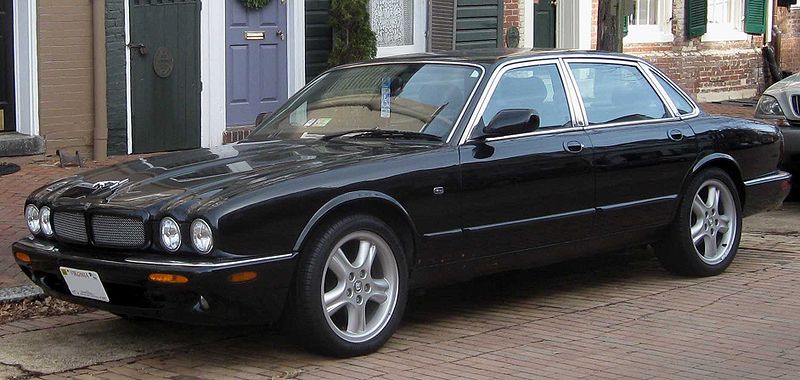
The Jaguar XJ6 was introduced in September 1968 and completely changed the Jaguar saloon car range. The car's impact is still felt by the company today. With the original Series 1 Jaguar XJ6 the Browns Lane company created a single range of cars to replace the Jaguar Mk2, S-Type, 420 and 420G. Jaguar's plan was to drop these cars within two years and focus its entire saloon car fortunes on the new car. So it had to be right.
Under the dynamic leadership of Sir William Lyons, Jaguar designed a car that reflected its heritage but moved the saloon car game on considerably. Jaguar buyers wanted space, pace and grace. They wanted class and pedigree. They chose a Jaguar because it was more youthful and stylish than a Rover. The Jaguar MK2, S-Type and 420 appealed to them and gave buyers choice, but multiple models meant costly production implications for Jaguar. By 1968 the Mk2, S-Type and 420 looked dated and archaic and were dynamically outclassed by their rivals. The S-Type and 420 also seemed to have lost the focus and all-round excellence that the Mk2 had originally delivered.
Jaguar conceived the XJ6 was a replacement for all of these cars in order to simplify its production line and focus its product offering. The XJ6 had to excel in every one of the main areas that mattered to customers - looks, comfort, space and handling. It is a reflection of the single-minded approach of Sir William Lyons that Jaguar succeeded and produced a car that, even 40 years on, is very difficult to fault in any respect. A good XJ6 is smooth, quiet, beautiful, spacious and a joy to drive.
Jaguar XJ6 Series 1
The Jaguar XJ6 was launched in 1968 with two engine sizes - 2.8 litre and 4.2 litre - which were both based on the venerable straight six XK engine used in the E Type. It wasn't a clean sheet design because under the skin Jaguar cleverly used the ultra-smooth suspension, plus the engine and drivetrain, from the 420G - components that were proven and ahead of the market.
In October 1969 Jaguar introduced Daimler variants of the XJ6 models - Daimler Sovereign, Daimler Double Six, Daimler Double Six Vanden Plas - which were essentially the same car with a Daimler grille and higher equipment levels.
In October 1972 Jaguar slotted its new 5.3 litre V12 engine into the XJ6 to create the XJ12, at the same time adding a long wheelbase version of the car with 4.2 litre (XJ6L) and 5.3 litre (XJ12L) engines. The long wheelbase added 4 inches to rear legroom and gave Jaguar a car that appealed to previous buyers of its 420G behemoth.
The appeal of the Series 1 to enthusiasts now is down to its purity of design and its relative rarity. It was also built before British Leyland began influencing Jaguar activities so product quality is considered to be better.
By the time the Series 1 was replaced by the Series 2 in September 1973. 98,527 cars had been produced.
Jaguar XJ6 Series 2
The XJ6 Series 2 was developed to meet USA Federal Safety laws concerning bumper height. Jaguar lifted the front bumper and shortened the grille to create a front end that has become synonymous with Jaguars for the last four decades. The heating and ventilation system and the interior were also improved.
In May 1975 Jaguar introduced the two-door coupe version (XJ6C and XJ12C) to broaden the range and compete with European competition from Mercedes and BMW. It was a remarkable achievement to create a beautiful and distinctive pillar less coupe from a standard saloon car. But the coupe was never particularly popular and was deleted after two years in November 1977.
In April 1975 Jaguar replaced the sluggish 2.8 litre variant with a 3.4 litre version of the XK straight six to increase power and performance.
In 1973 Jaguar standardised production around the long wheelbase version of the car and all future versions used this platform.
The Series 2 was the most prolific Jaguar XJ6 version and introduced a design style that is still current. For many an early Series 2 represents the best blend of design purity, quality and reliability. The quality of 1975-on cars reduced continuously under British Leyland control and the cars became more complex and unreliable.
The Jaguar XJ6 Series 2 was replaced in March 1979 by the Series 3. 127,078 cars were produced.
Jaguar XJ6 Series 3
For the XJ6 Series 3 Jaguar got the botox out. By 1979 the car was 11 years old and starting to show its age - several competitors had launched and replaced cars over the same period - so Jaguar turned to Pininfarina for a major face-lift. Retaining the XJ6 floor plan and basic style, the Italian styling house increased the roofline and glasshouse area, particularly for rear seat passengers, generally smoothed off the styling and integrated modern plastic bumpers. The chrome door handles were replaced with flush plastic handles and the overall effect was considered quite successful.
The model range was slimmed down to 4.2, 3.4 and 5.3 V12 variants and the car stayed in production until 1987 when it was replaced by the XJ40. 177,243 Series 3 cars were made.
The Jaguar XJ6 Series 3 is the most modern, comfortable and refined version of the car. However product quality was very patchy throughout its lifetime and good cars are now rare.
source: http://greatescapecars.blogspot.com/2008/03/jaguar-xj6-model-history.html
http://www.boscheuropean.com
No comments:
Post a Comment